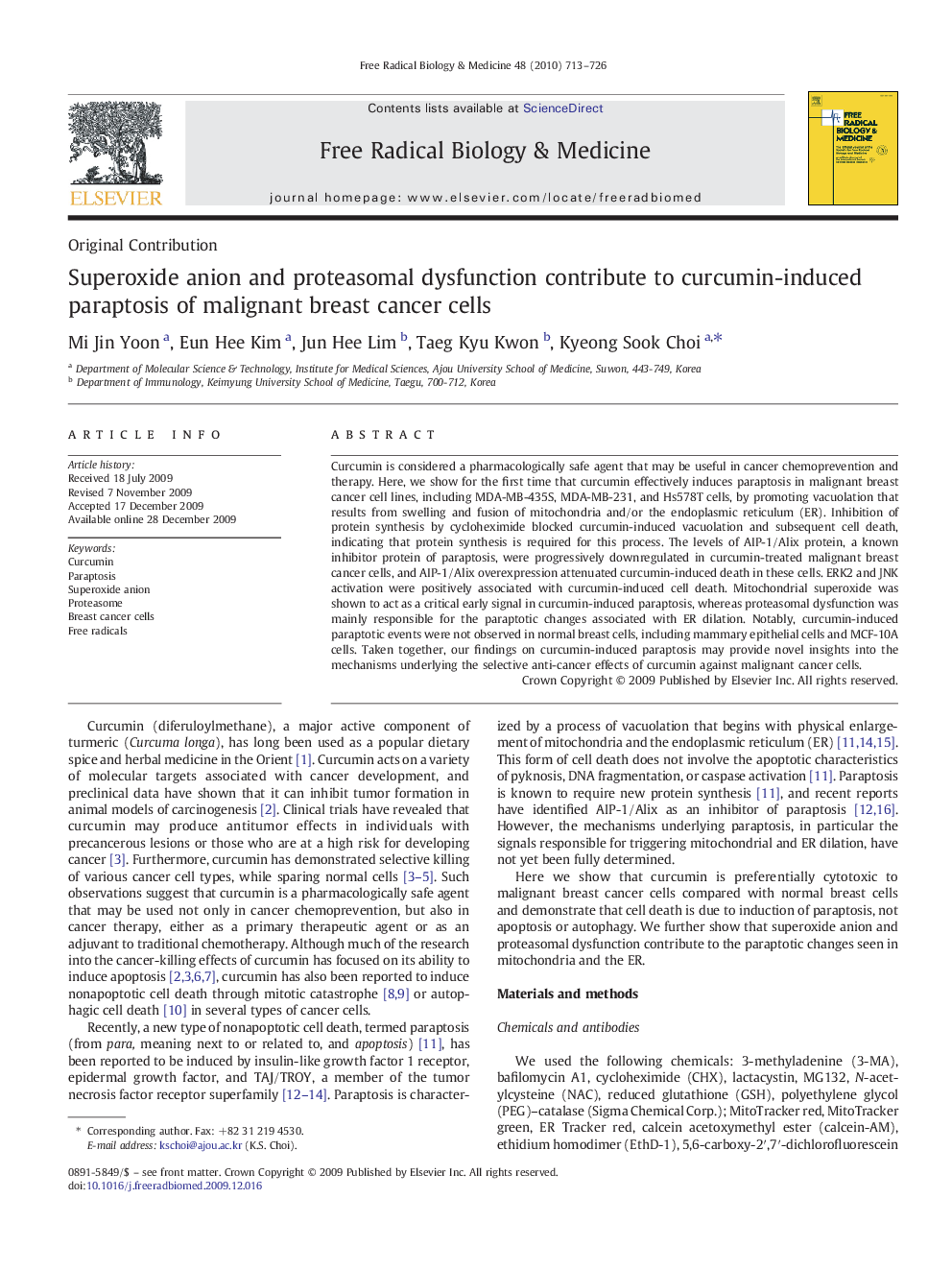| Article ID | Journal | Published Year | Pages | File Type |
|---|---|---|---|---|
| 1910013 | Free Radical Biology and Medicine | 2010 | 14 Pages |
Curcumin is considered a pharmacologically safe agent that may be useful in cancer chemoprevention and therapy. Here, we show for the first time that curcumin effectively induces paraptosis in malignant breast cancer cell lines, including MDA-MB-435S, MDA-MB-231, and Hs578T cells, by promoting vacuolation that results from swelling and fusion of mitochondria and/or the endoplasmic reticulum (ER). Inhibition of protein synthesis by cycloheximide blocked curcumin-induced vacuolation and subsequent cell death, indicating that protein synthesis is required for this process. The levels of AIP-1/Alix protein, a known inhibitor protein of paraptosis, were progressively downregulated in curcumin-treated malignant breast cancer cells, and AIP-1/Alix overexpression attenuated curcumin-induced death in these cells. ERK2 and JNK activation were positively associated with curcumin-induced cell death. Mitochondrial superoxide was shown to act as a critical early signal in curcumin-induced paraptosis, whereas proteasomal dysfunction was mainly responsible for the paraptotic changes associated with ER dilation. Notably, curcumin-induced paraptotic events were not observed in normal breast cells, including mammary epithelial cells and MCF-10A cells. Taken together, our findings on curcumin-induced paraptosis may provide novel insights into the mechanisms underlying the selective anti-cancer effects of curcumin against malignant cancer cells.
